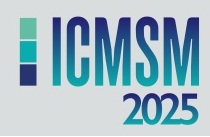Application of quartz crystal microbalance and dynamic impedance spectroscopy to the study of copper corrosion inhibitors
DOI:
https://doi.org/10.5281/zenodo.12568722Keywords:
DEIS, EQCM, Corrosion inhibition, Copper, Benzotriazole, Sodium FolateAbstract
The study investigates the application of Dynamic Electrochemical Impedance Spectroscopy (DEIS) and Electrochemical Quartz Crystal Microbalance (EQCM) techniques to examine the corrosion inhibition of copper by Benzotriazole and Sodium Folate in a 0.1 M NaCl solution. DEIS, an advanced version of Electrochemical Impedance Spectroscopy (EIS), allows for real-time monitoring of non-stationary electrochemical systems, while EQCM enables the detection of minute mass changes during electrochemical reactions. Through 24-hour chronopotentiometric measurements, the study observed the effects of 5 mM Benzotriazole and 10 mM Sodium Folate on copper corrosion. Results indicated that Benzotriazole significantly enhances corrosion resistance by forming a protective layer on the copper surface, as evidenced by increased impedance and stable mass changes. Conversely, Sodium Folate exhibited a less effective, dynamic interaction with the copper surface. This research highlights the synergistic use of DEIS and EQCM in understanding corrosion mechanisms and inhibitor efficiency, providing insights into optimizing corrosion protection strategies. The findings suggest that while both inhibitors improve corrosion resistance, Benzotriazole demonstrates superior performance, underscoring its potential for more effective corrosion control in various industrial applications.















